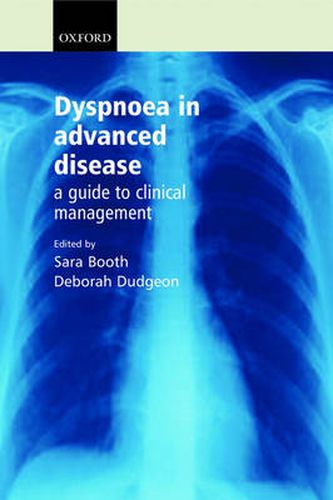Readings Newsletter
Become a Readings Member to make your shopping experience even easier.
Sign in or sign up for free!
You’re not far away from qualifying for FREE standard shipping within Australia
You’ve qualified for FREE standard shipping within Australia
The cart is loading…






Dyspnoea (breathlessness) is an uncomfortable awareness of breathing that occurs in approximately 30-75 per cent of terminal cancer patients. It is one of the most distressing symptoms for both patients and family members and can seriously impact on quality of life. Typically, dyspnoea is associated with congestive heart failure, end-stage chronic obstructive pulmonary disease, or lung cancer. This book provides palliative care doctors and specialist nurses with practical guidelines to help manage and treat patients with breathlessness. It includes the science behind the symptom in an attempt to explain the pathology and physiology of this complex condition. The book has been organized to address generalized aspects of breathlessness in advanced illness and more specific aetiologies and managements relevant to particular underlying diseases. It summarizes the epidemiology and the pathophysiology of breathlessness, measurement, research approaches, rehabilitation and exercise, clinical approaches that can be taken at the bedside, pharmacological and non-pharmacological approaches, and surgical interventions. The care of patients with dyspnoea requires input from a variety of disciplines such as palliative care, physiotherapy, respiratory medicine and nursing, and this is reflected in the multidisciplinary list of contributors.
$9.00 standard shipping within Australia
FREE standard shipping within Australia for orders over $100.00
Express & International shipping calculated at checkout
Dyspnoea (breathlessness) is an uncomfortable awareness of breathing that occurs in approximately 30-75 per cent of terminal cancer patients. It is one of the most distressing symptoms for both patients and family members and can seriously impact on quality of life. Typically, dyspnoea is associated with congestive heart failure, end-stage chronic obstructive pulmonary disease, or lung cancer. This book provides palliative care doctors and specialist nurses with practical guidelines to help manage and treat patients with breathlessness. It includes the science behind the symptom in an attempt to explain the pathology and physiology of this complex condition. The book has been organized to address generalized aspects of breathlessness in advanced illness and more specific aetiologies and managements relevant to particular underlying diseases. It summarizes the epidemiology and the pathophysiology of breathlessness, measurement, research approaches, rehabilitation and exercise, clinical approaches that can be taken at the bedside, pharmacological and non-pharmacological approaches, and surgical interventions. The care of patients with dyspnoea requires input from a variety of disciplines such as palliative care, physiotherapy, respiratory medicine and nursing, and this is reflected in the multidisciplinary list of contributors.